Discover 35 hidden attractions, cool sights, and unusual things to do in Lübeck (Germany). Don't miss out on these must-see attractions: Holstentor, St. Mary's Church, and Lübeck Museum of Theatre Puppets. Also, be sure to include Lübeck Cathedral in your itinerary.
Below, you can find the list of the most amazing places you should visit in Lübeck (Schleswig-Holstein).
Table of Contents
Holstentor
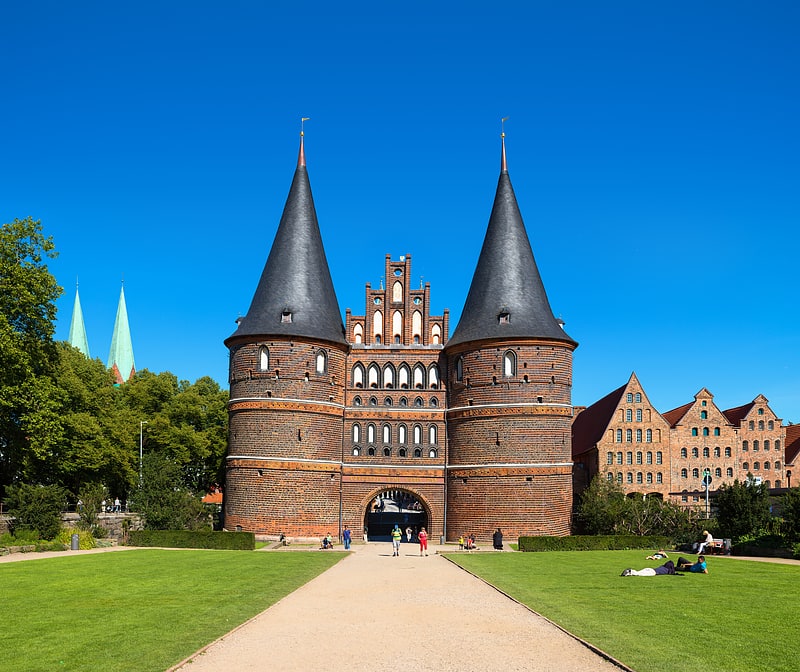
Museum in an iconic Gothic city gate. The Holsten Gate is a city gate marking off the western boundary of the old center of the Hanseatic city of Lübeck. Built in 1464, the Brick Gothic construction is one of the relics of Lübeck's medieval city fortifications and one of two remaining city gates, the other being the Citadel Gate. Known for its two-round towers and arched entrance, it is regarded today as a symbol of the city. Together with the old city centre of Lübeck it has been a UNESCO World Heritage Site since 1987.[1]
St. Mary's Church
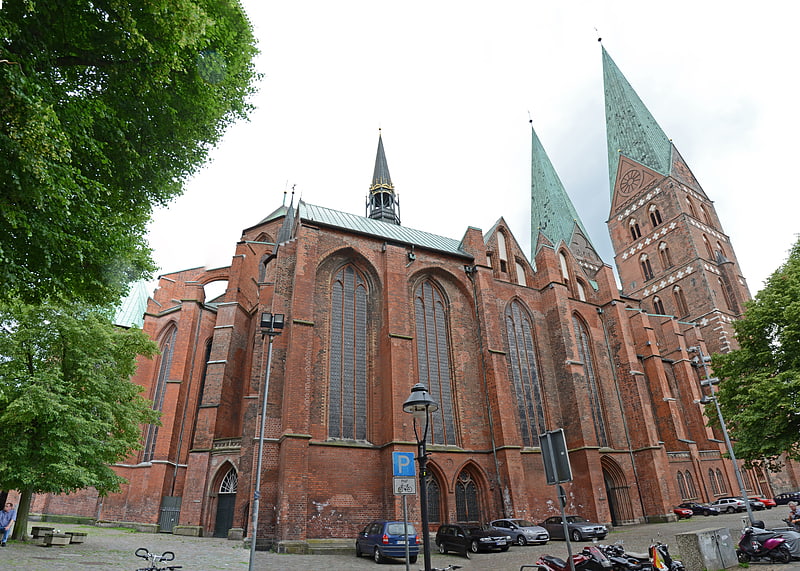
Also known as: Marienkirche
13th-century symbol of the city. The Lübeck Marienkirche was built between 1265 and 1351. The Lübeck market and main parish church is located on the highest point of Lübeck's old town island, is part of the Lübeck Old Town UNESCO World Heritage Site and one of the largest brick churches. It is referred to as the "mother church of brick Gothic" and is considered a major work of church building in the Baltic Sea region. St. Marien belongs to the Evangelical Lutheran Church in Northern Germany.
St. Mary's epitomizes north German Brick Gothic and set the standard for about 70 other churches in the Baltic region, making it a building of enormous architectural significance. St Mary's Church embodied the towering style of Gothic architecture style using north German brick. It has the tallest brick vault in the world, the height of the central nave being 38.5 metres (126 ft).
It is built as a three-aisled basilica with side chapels, an ambulatory with radiating chapels, and vestibules like the arms of a transept. The westwork has a monumental two-tower façade. The height of the towers, including the weather vanes, is 124.95 metres (409.9 ft) and 124.75 metres (409.3 ft), respectively.
St. Mary's is located in the Hanseatic merchants' quarter, which extends uphill from the warehouses on the River Trave to the church. As the main parish church of the citizens and the city council of Lübeck, it was built close to the town hall and the market.[2]
Address: Schüsselbuden 13, 23552 Lübeck
Lübeck Museum of Theatre Puppets
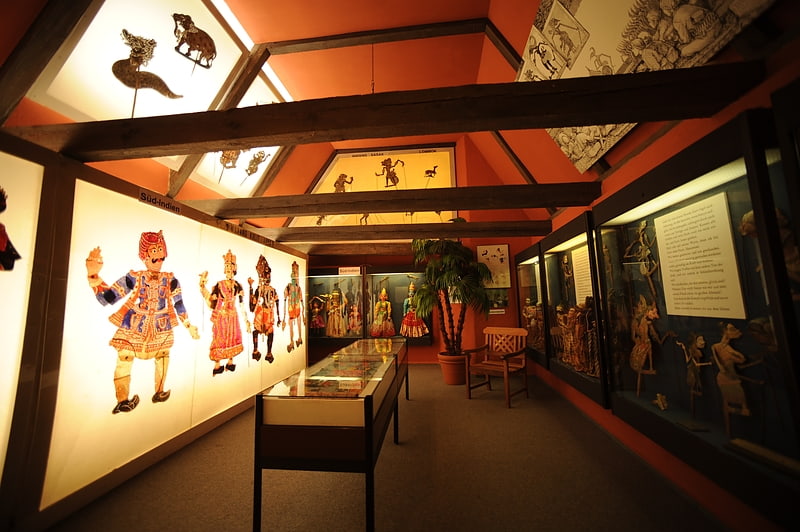
Also known as: Theaterfigurenmuseum Lübeck
Museum in Lübeck, Germany. The Lübeck Museum of Theatre Puppets is a museum of international puppetry in the Hanseatic city of Lübeck, Germany.[3]
Address: Kolk 14, 23552 Lubeck
Lübeck Cathedral
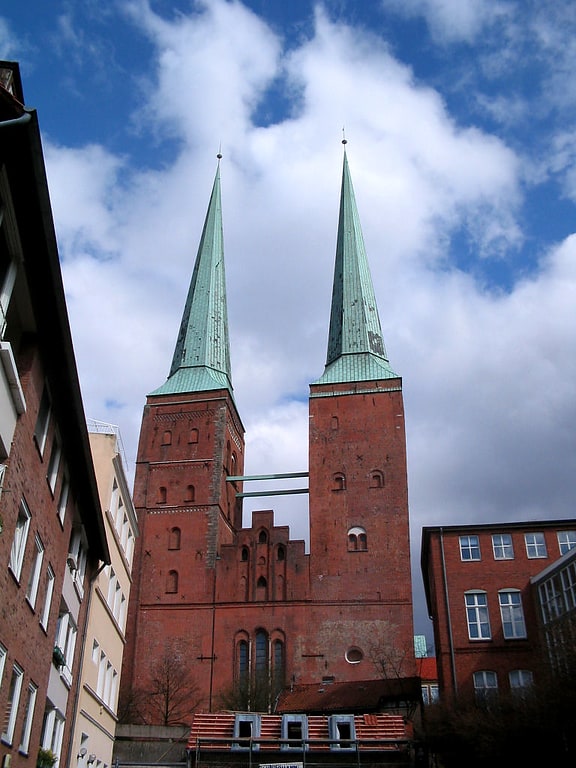
Also known as: Lübecker Dom
Cathedral in Lübeck, Germany. Lübeck Cathedral is a large brick-built Lutheran cathedral in Lübeck, Germany and part of the Lübeck World Heritage Site. It was started in 1173 by Henry the Lion as a cathedral for the Bishop of Lübeck. It was partly destroyed in a bombing raid in World War II, when the Arp Schnitger organ was destroyed by fire, but was subsequently reconstructed.
It is also famous for works of Bernt Notke and Thomas Quellinus, which survived the bombing raid in 1942. The famous altar by Hans Memling is now in Lübeck's St. Annen Museum. The current church was finished in 1982.
In 1873 the Cathedral celebrated its 700th anniversary, when an offshoot of the Lutheran Memorial Beech Tree, in Steinbach near Bad Liebenstein in Thuringia, was planted in the churchyard.[4]
Address: Mühlendamm 2-6, 23552 Lübeck
European Hansemuseum
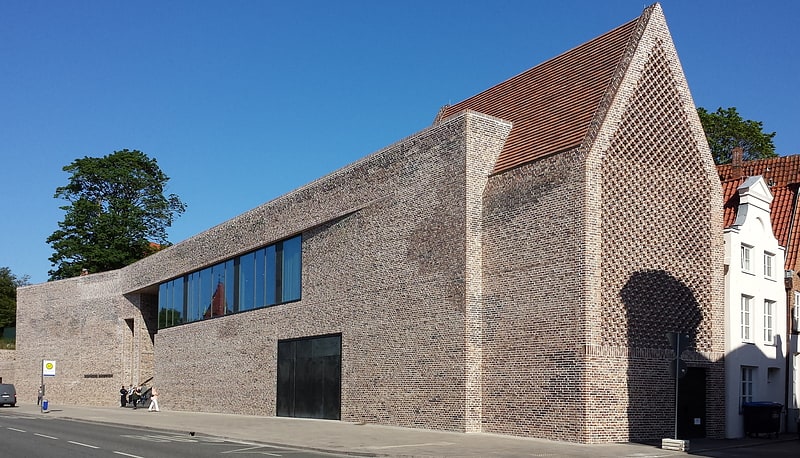
Also known as: Europäisches Hansemuseum
Museum in Lübeck, Germany. The European Hansemuseum is a museum in Lübeck, Germany dedicated to the history of the Hanseatic League. Covering an area of in total 7,405 square metres, is the largest museum in the world specifically dedicated to this subject. The museum was opened in May 2015.[5]
Address: An der Untertrave 1, 23552 Lübeck
Burgtor
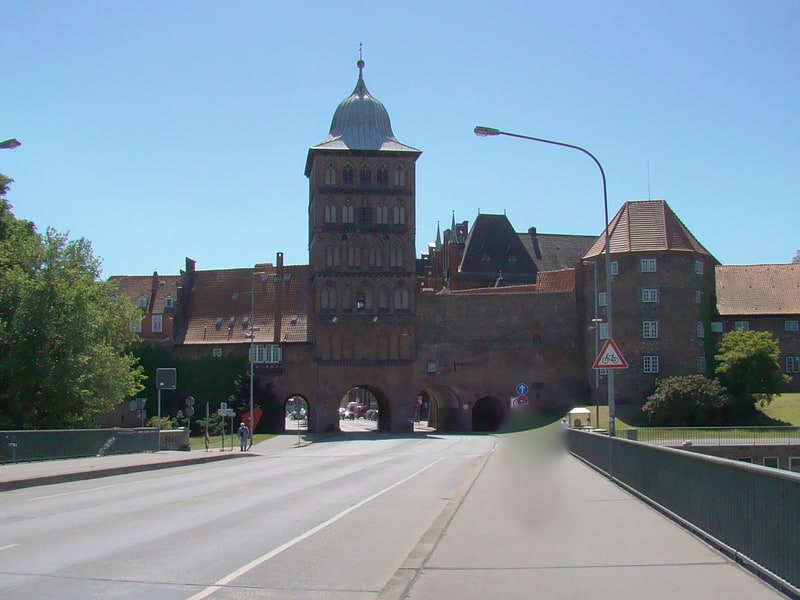
Tourist attraction in Lübeck, Germany. The Burgtor, built 1444 in late Gothic style, was the northern city gate of Hanseatic Lübeck, now in Germany. It is one of two towered gates remaining from the medieval fortifications, the other being the more famous Holstentor.
The Baroque helmet-like roof was added in 1685.[6]
Address: Große Burgstraße 15, 23552 Lübeck
St. Petri
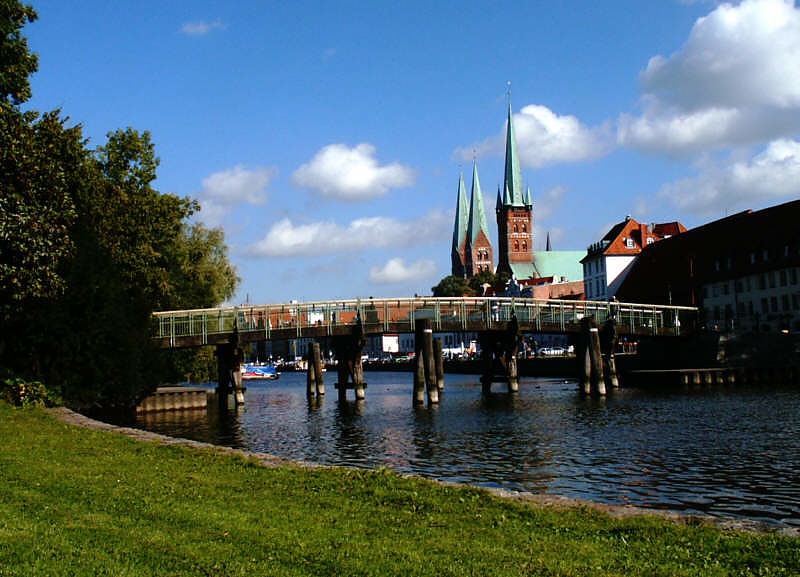
St. Piotr in Lubece - one of the five main churches in the Old Town in Lubecki. A unique five -yellow church in the style of North German brick Gothic. Seriously damaged during the British air attack in 1942, rebuilt in 1987 serves as a church of the University of Lubecki and the Cultural Center.
Temple dedicated to St. Piotr, the patron of fisheries is one of the main monuments of the Lubzeatian Old Town of Lubecka, which in 1987 was inscribed on the UNESCO cultural heritage list.
Address: Königstraße 104, 23552 Lübeck
Aegidienkirche

Church building in Lübeck, Germany. The St.-Aegidien-Kirche or Aegidienkirche is a church building in the north German city of Lübeck, dedicated to saint Giles. It is the smallest and westernmost church in the city centre. It is first mentioned as dedicated to St Giles in 1227 - this is unusual for a north German and may link it to an earlier 1172-1182 wooden church built under bishop Henry I, formerly the abbot of the abbey dedicated to the same saint in Braunschweig. The church's coat of arms includes a "T", short for "Tilgenkark", the Low German form of the church's name, and "St Tilgen" or "St. Illigen", the Low German forms of the saint's name.
It remained in the nearby cathedral chapter's control until the Protestant Reformation, when shortly after Easter 1530 it hosted the town's first eucharist in which both elements were distributed to the people. Its pastor "Johann by der Erde" was also the city's first clergyman to marry, also in 1530. The church roof was hit by a shell during the 1806 Battle of Lübeck but it did not ignite, whilst a cannonball from the same engagement is still lodged in the wall near the north door. The area around the church was heavily damaged during the March 1942 air-raid on the city and an aerial mine destroyed historic stained glass and work by Curt Stoermer inside the church but left the exterior unaffected.[7]
Address: Aegidienstraße 75, 23552 Lübeck
St. Anne's Museum Quarter
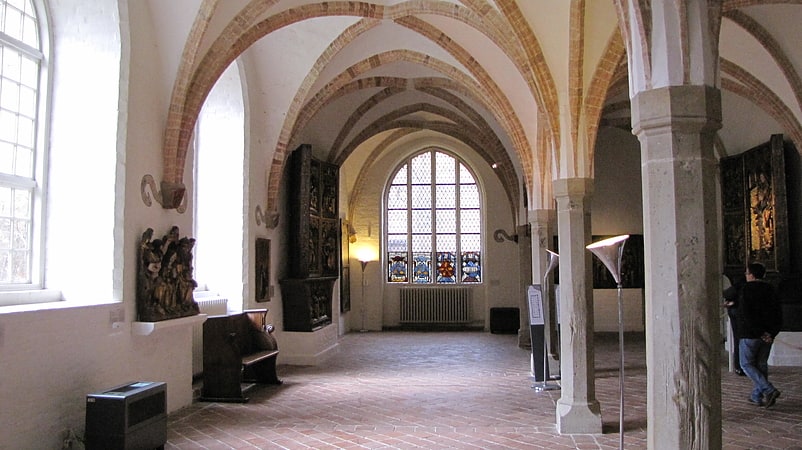
Also known as: Museumsquartier St. Annen
Museum in Lübeck, Germany. St. Anne's Museum Quarter was previously an Augustinian nunnery, St. Anne's Priory. Since 1915 it has housed St. Anne's Museum, one of Lübeck's museums of art and cultural history containing Germany's largest collection of medieval sculpture and altar-pieces, including the famous altars by Hans Memling, Bernt Notke, Hermen Rode, Jacob van Utrecht and Benedikt Dreyer.
These are exhibited on the building's first floor is a museum and art exhibition hall located near St. Giles Church and next to the synagogue in the south-east of the city of Lübeck, Germany.
On the building's second floor is exhibited a large collection of home decor items and interiors of different periods, showing how the area's citizens lived from medieval times up to the 1800s.
A modern addition houses special exhibits.
The museum is part of the Lübeck World Heritage site.[8]
Address: St.-Annen-Straße 15, 23552 Lübeck
Willy Brandt House

Also known as: Willy-Brandt-Haus Lübeck
Museum in Lübeck, Germany. The Willy-Brandt-Haus in Lübeck is a museum and a memorial to the late politician Federal Chancellor and Nobel Peace Prize Laureate, Willy Brandt, of the Social Democratic Party of Germany.
The Berlin based branch of the federal Chancellor Willy Brandt Foundation also houses the Office of Monumental Protection of the Hanseatic city of Lübeck, in Schleswig-Holstein. It is the third establishment in the city to honor a Nobel Prize laureate from Lübeck.
The director of the Willy-Brandt-Haus is the historian, Jürgen Lillteicher.
Willy Brandt was not born in this building, but in different house in the Lübeck district of St. Lorenz.[9]
Address: Königstraße 21, 23552 Lübeck
Brahms-Institut
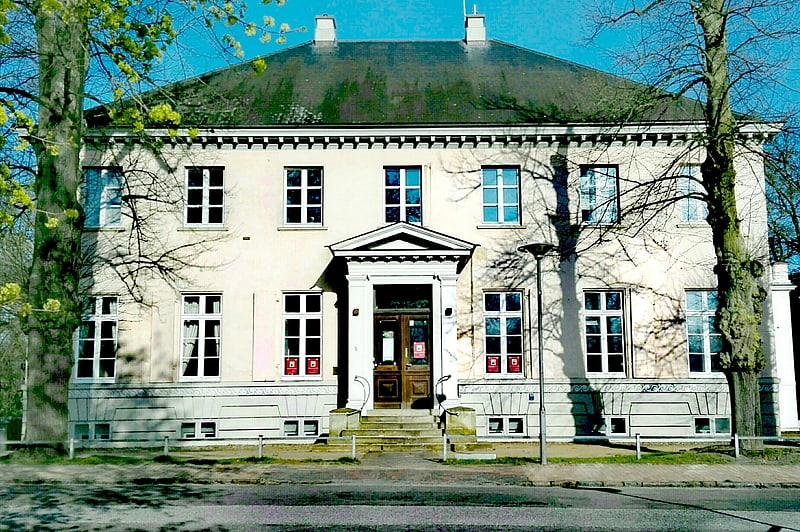
College in Lübeck, Germany. Brahms-Institut acquired the largest private collection of Johannes Brahms engravings, manuscripts and first and early prints in 1990. In addition to Brahms, the focus is on Robert and Clara Schumann, Theodor Kirchner, Joseph Joachim, and some lesser known performers and composers of the era. In addition to music manuscripts, the collection also includes correspondence, photos, and drawings.[10]
Address: 4 Jerusalemsberg, Lübeck (St. Gertrud)
Theater Lübeck
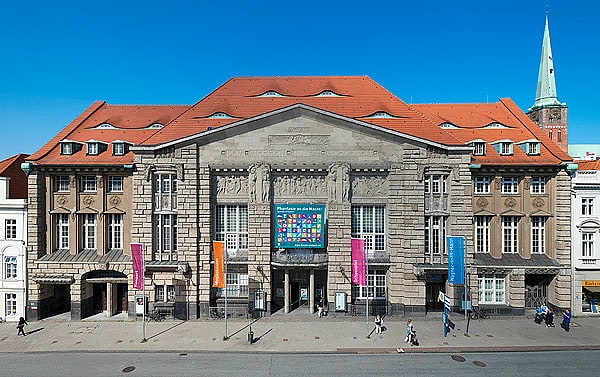
Theater in Lübeck, Germany. The Theater Lübeck is one of the largest theaters in the German state of Schleswig-Holstein. It is managed by Theater Lübeck GmbH, a state-owned company of the Hansestadt Lübeck.
Public interest in theatrical works and opera arose in Lübeck in the early days of the Age of Enlightenment and the first opera production in the city took place on 2 June 1746 in the house of master craftsman Schröder Ecke on the Königstraße. The predecessor of the current building dates from 1752. The transition of the company to the city in the 19th century is described by Thomas Mann in his novel Buddenbrooks.
Prominent conductors that began their careers in Lübeck include Hermann Abendroth, Wilhelm Furtwängler and Christoph von Dohnányi.[11]
Address: Beckergrube 16, 23552 Lübeck
Buddenbrookhaus
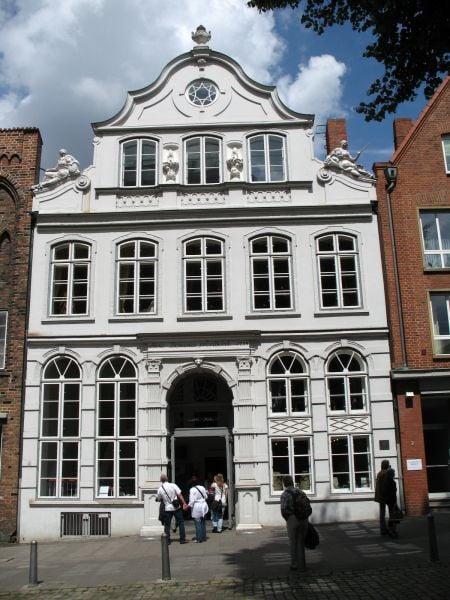
Buddenbrook House - a tenement house at Mengstraße 4 in Lübeck, known for Tomasz Manna's novel. Buddenbrooks.
From 1989, one of the objects of the Hanseatic Culture Foundation of Lubelli (German. Kulturstiftung Hansestadt Lübeck). In 1993, Henry and Tomasz Mannów was opened here. The following organizations have their headquarters: Buddenbrookhaus Assistance Society (German. Förderverein Buddenbrookhaus), German Association. Tomasz Manna (German. Deutsche Thomas-Mann Gesellschaft), Associations for them. Henryk Mann (German. Heinrich-Mann Gesellschaft) and the associations. Erich Mühsama (German. Erich Mühsam-Gesellschaft). There is also a museum showing two permanent exhibitions: "Buddenbrooks - the novel of the century" and "Mannów - a family of writers".
Address: Mengstr. 4, 23552 Lubeck
St. Catherine's Church
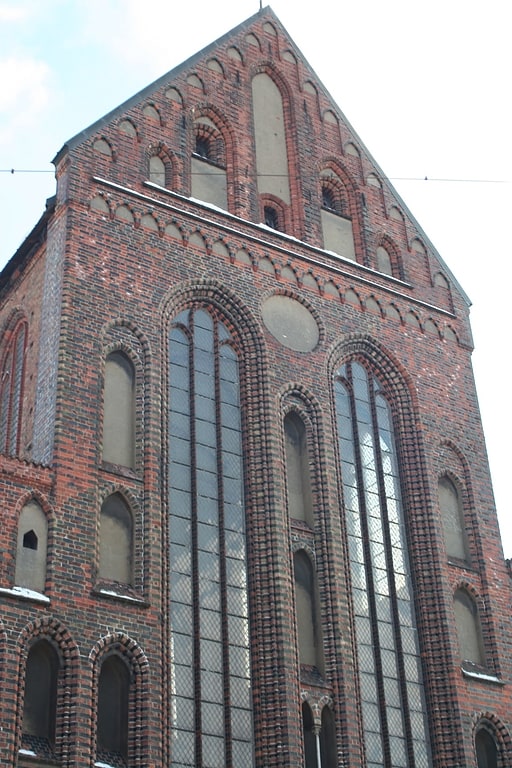
Also known as: Katharinenkirche
Museum in Lübeck, Germany. St. Catherine Church in Lübeck is a Brick Gothic church which belonged to a Franciscan monastery in the name of Saint Catherine of Alexandria, seized along other property from the Catholic Church by a city ordinance drawn up by the Lutheran pastor and friend of Martin Luther, Johannes Bugenhagen, passed and implemented on May 27, 1531, as Bugenhagen had previously accomplished this in Braunschweig (on September 5, 1528, with what is considered the first ever Protestant church ordinance, the Braunschweiger Kirchenordnung and Hamburg, Lübeck.
The Church was built in the early 14th century. It is part of the Lübeck world heritage and used as a museum church and exhibition hall by the Lübeck museums since 1980.
The exhibits include a copy of Saint George and the Dragon made by Bernt Notke for Storkyrkan in Stockholms Gamla Stan, an Epitaph by Godfrey Kneller in memory of his father and another one by Tintoretto, the Resurrection of Lazarus.
Some the former altars, like Hermen Rodes St. Luke altar, are on permanent exhibit in the St. Annen Museum in Lübeck.
The facade is decorated with 20th-century clinker brick sculptures by Ernst Barlach and Gerhard Marcks.[12]
Passat Ship
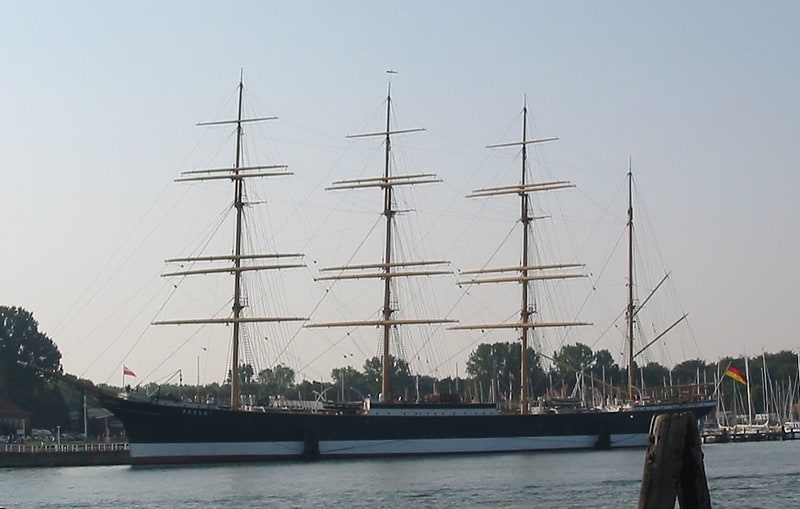
Also known as: Passat
Historic 4-mast sailing ship with tours. Passat is a German four-masted steel barque and one of the Flying P-Liners, the famous sailing ships of the German shipping company F. Laeisz. She is one of the last surviving windjammers.[13]
Address: Priwallpromenade 3a, 23570 Lübeck (Travemünde)
Sacred Heart Church
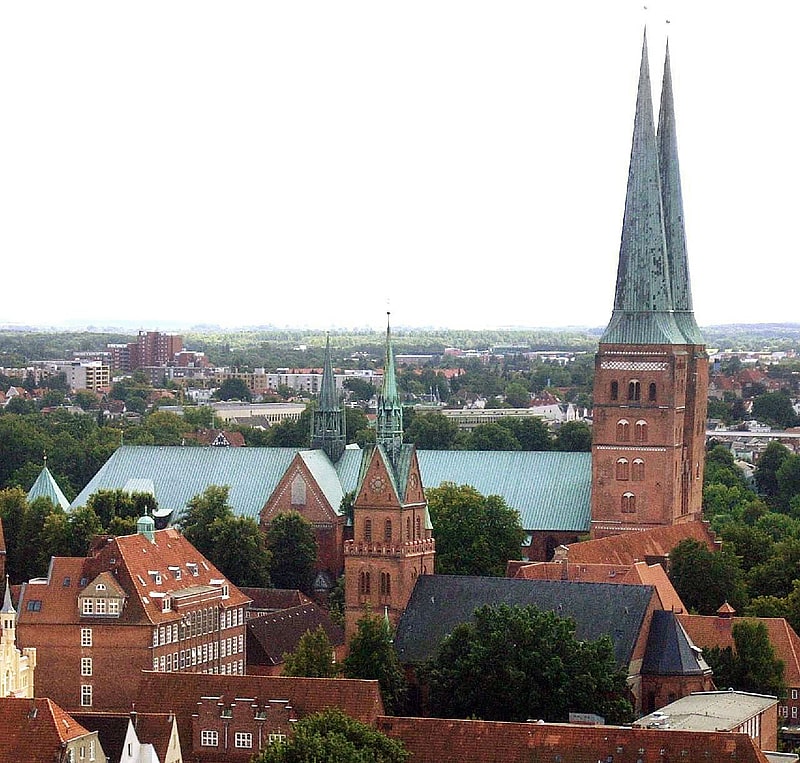
Also known as: Propsteikirche Herz Jesu
Catholic church in Lübeck, Germany. The Sacred Heart Church is the main Roman Catholic church in Lübeck. It was built in 1888 and consecrated on 10 May 1891.[14]
Address: Parade 4, 23552 Lubeck
Behnhaus
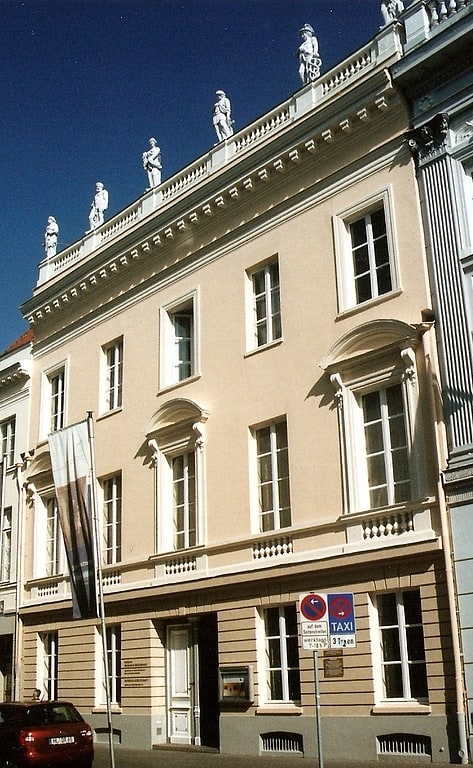
Museum in Lübeck, Germany. The Behnhaus is an art museum in the Hanseatic city of Lübeck, Germany, and part of its World heritage site.
The Behnhaus as a structure is a neoclassical building with interior design by the Danish architect Joseph Christian Lillie. The museum exhibits furniture from this period, and paintings and sculptures from this period onwards. It specializes in Nazarene art, since Friedrich Overbeck was born in Lübeck.
The museum is also known for its collection of works by Edvard Munch.[15]
Address: Königstraße 9, 23552 Lübeck
Alter Leuchtturm Travemünde
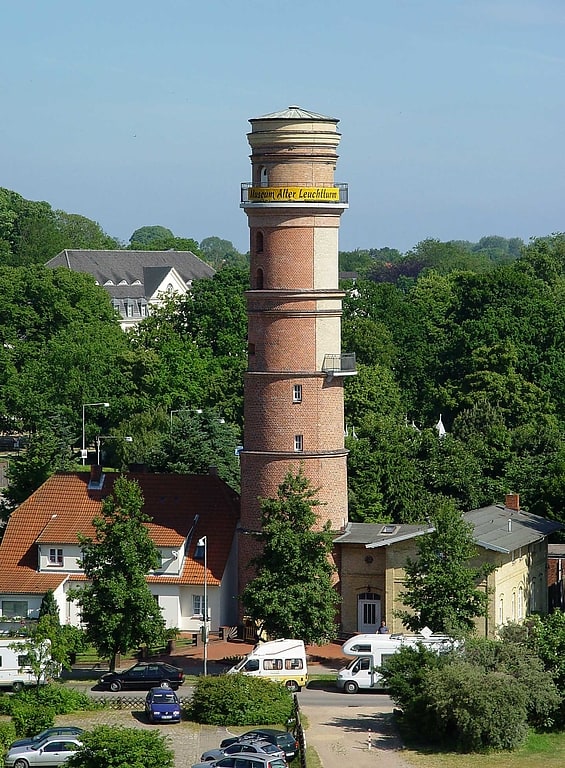
Top attraction, Museum
Address: 1 Am Leuchtenfeld, Lübeck (Travemünde)
Heilig-Geist-Hospital
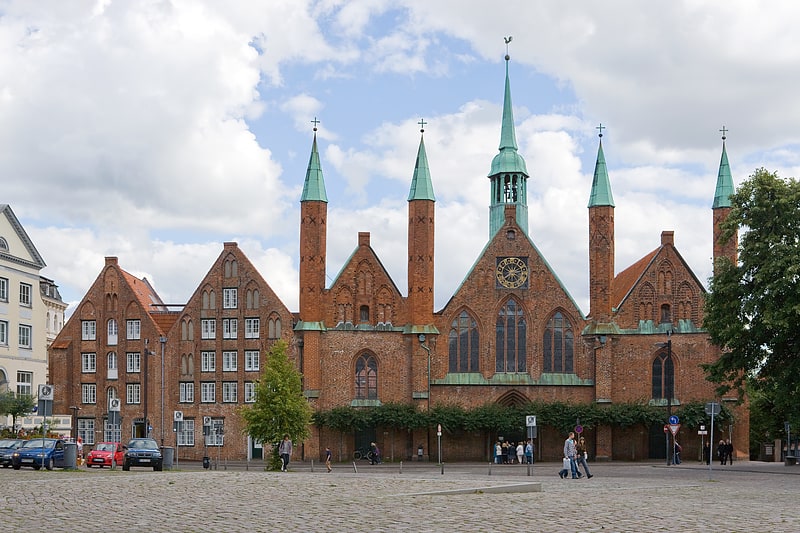
Hospital of St. Spirit in Lubece - a hospital from 1286 in the Lubec district of Koberg, one of the oldest social facilities in the world. An eminent example of the North -German Gothic brick architecture. Currently, the hospital building houses a social welfare home.
Hospital of St. The spirit is one of the main monuments of the Lubecetic Old Town of Lubecka, which in 1987 was inscribed on the UNESCO cultural heritage list.
Dassower See
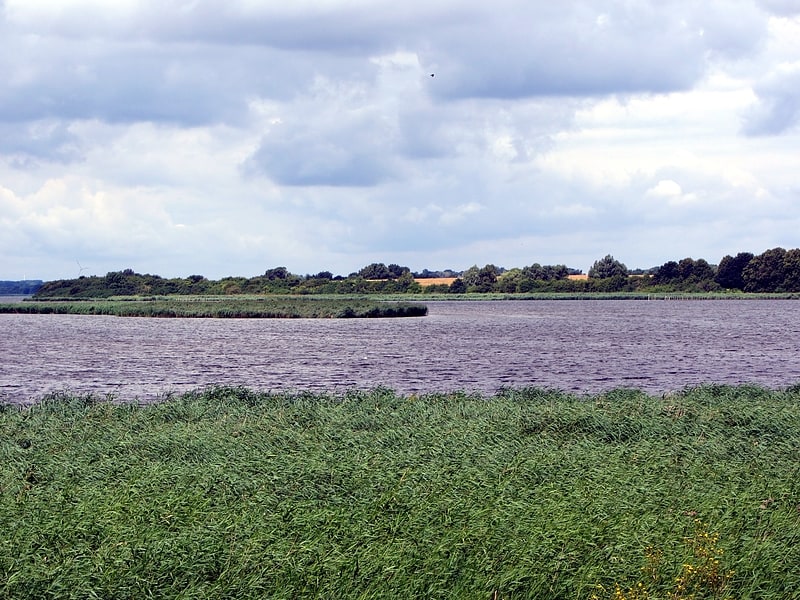
Lake in Germany. Despite its name, the Dassower See, sometimes called Lake Dassow or Dassow Bay in English, is not a lake, but a side bay, locally known as a wiek, of the Trave Fjord, northeast of Lübeck on the Baltic Sea.[16]
St.-Jakobi-Kirche
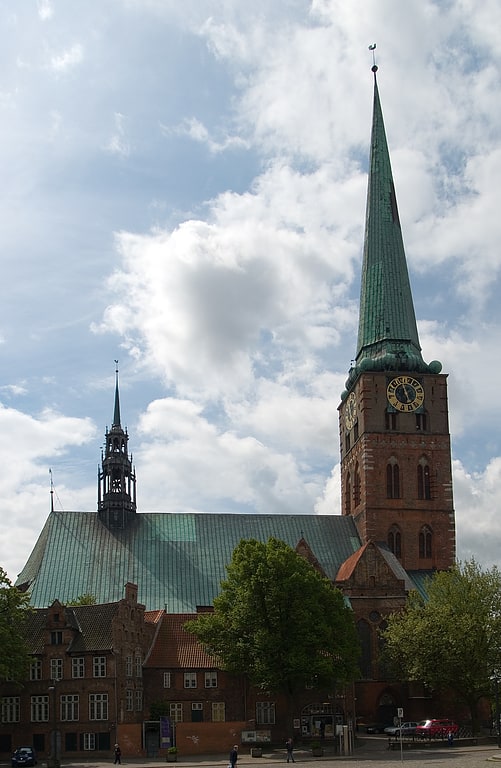
St. Jakub in Lubece - one of the five main churches in the Old Town in Lubecki. It was created as a temple of the sea people. Taken in 1334, he is one of the stations of the Way of St. Jakub from Northern Europe to Santiago de Compostela. It is one of the main monuments of the Hanseatic Old Town of Lubecka, which in 1987 was included in the UNESCO cultural heritage list.
Address: Jakobikirchhof 3, 23552 Lübeck
Museumskirche Sankt Katharinen
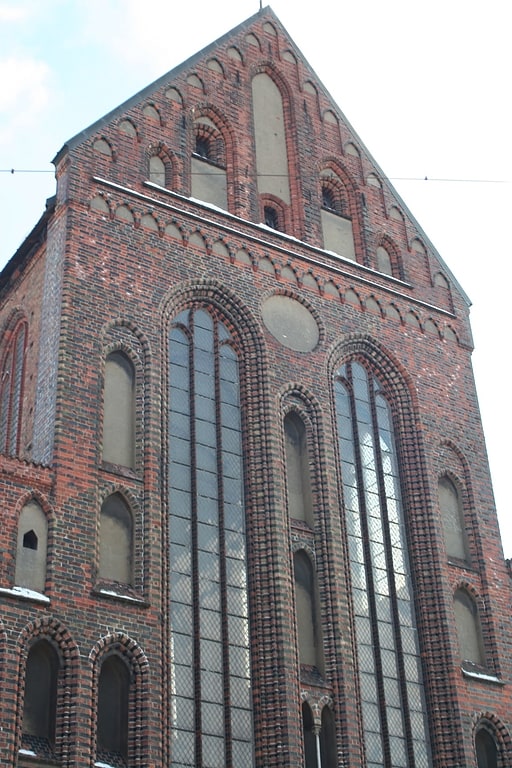
Museum
Address: 27 Königstraße, Lübeck
Bad Schwartau

City in Germany. Bad Schwartau is the largest city in the district of Ostholstein, in Schleswig-Holstein, Germany. It is situated on the river Trave and the Schwartau creek, approx. 5 km north of Lübeck. Bad Schwartau is a spa, well known for its iodide saline waters about 13 km from the Baltic Sea.[17]
City Hall
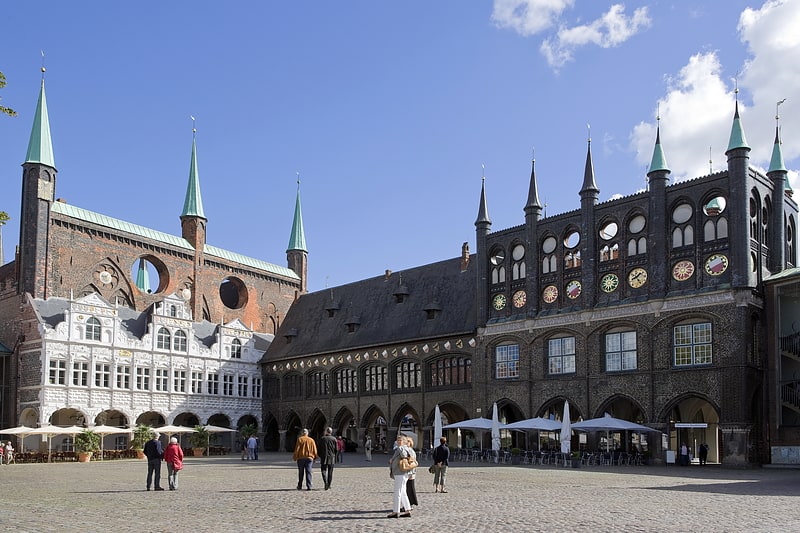
Town Hall in Lubece - one of the most important examples of North German Gothic brick architecture. Built in the fourteenth century, it still serves as the seat of the mayor of the city of Lubek and the place of the local parliament.
The Town Hall is one of the main monuments of the Hanseatic Old Town of Lubecka, which in 1987 was included in the UNESCO cultural heritage list.
Address: Breite Str. 62, 23552 Lubeck
Museum für Natur und Umwelt
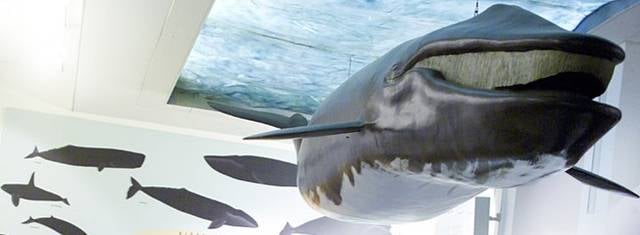
Museum
Address: Musterbahn 8, Lübeck
Günter-Grass-Haus

Museum, Specialty museum
Address: Glockengießerstraße 21, 23552 Lübeck
Wallanlagen

Relax in park, Park
Address: Wallstrasse 20, Lübeck
Musik- und Kongresshalle

Monuments and statues, Concert hall, Event space, Convention center
Address: Willy-Brandt-Allee 10, 23554 Lübeck
Ehrenfriedhof
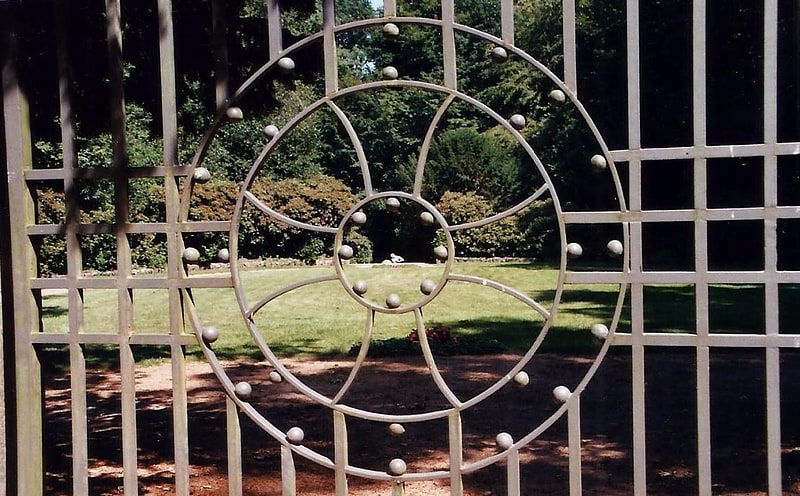
The Cemetery of Honor is a central memorial in Lübeck for the civilian and military victims of both World Wars. It is about five hectares in size, includes 1882 gravesites and about 500 memorial stones. It is located on Travemünder Allee at the level of the Sandberg/Heiligen-Geist-Kamp intersection and opposite the Burgtorf cemetery.
Fehmarnbelt Lightship
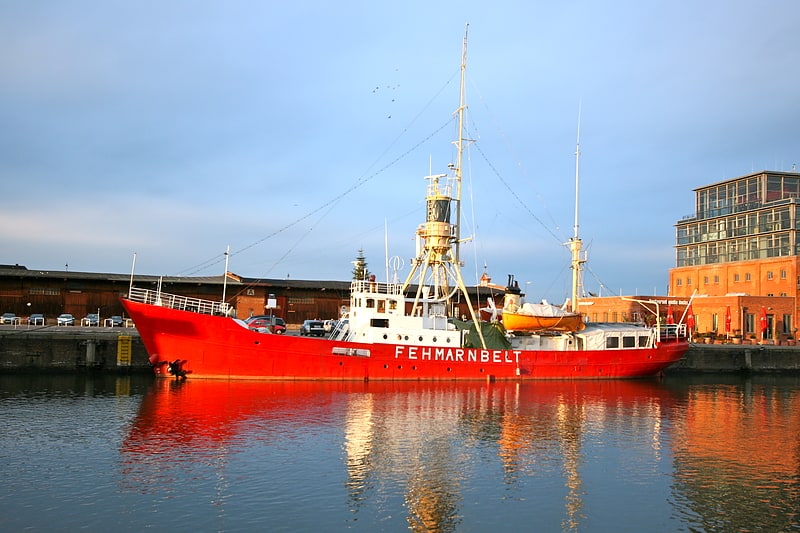
Also known as: Fehmarnbelt
Museum in Lübeck, Germany. The Fehmarnbelt Lightship was built in 1906–1908 at Brake on the River Weser and entered service in 1908 as the lightship Außeneider. Until 1945 it was moored at the position known as Außeneider guarding the estuary of the river Eider on the North Sea coast. In the years from 1956 to 1965 it was a reserve lighthouse in the Baltic Sea and then from 1965 to 1984 it was positioned under its present name in the Fehmarn Belt.
Today it belongs to a charitable society and its home port is the Lübeck museum port in the Hanseatic city of Lübeck, where it spends the winter months at least. The ship is preserved in working condition and during the summer it is taken to sea in order to test all facilities under sea conditions. Visits on board the lightship are permitted.[18]
Address: An der Untertrave, Lübeck
St.-Philippus-Kirche
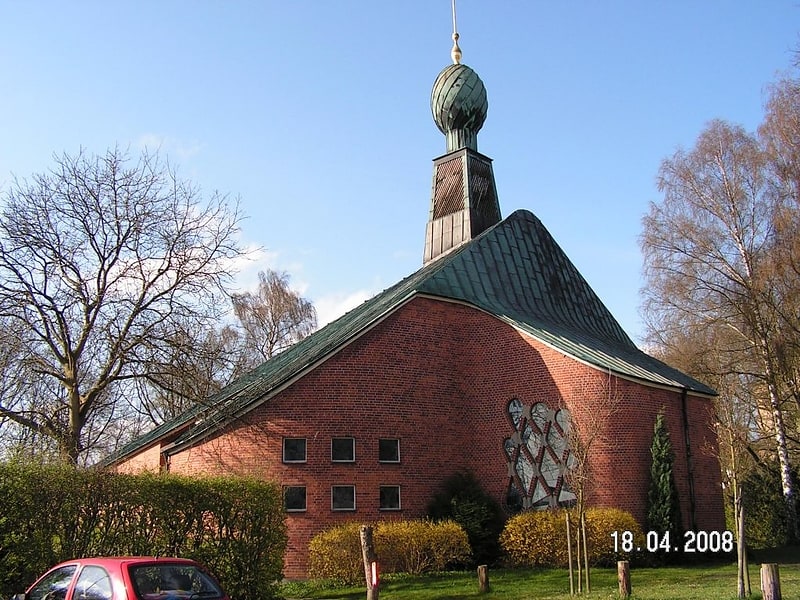
Church, Sacred and religious sites
Address: Schlutuper Str. 52, 23566 Lübeck (St. Gertrud)
Wissenschaftspfad: Chaospendel

Monuments and statues
Jewish Cemetery
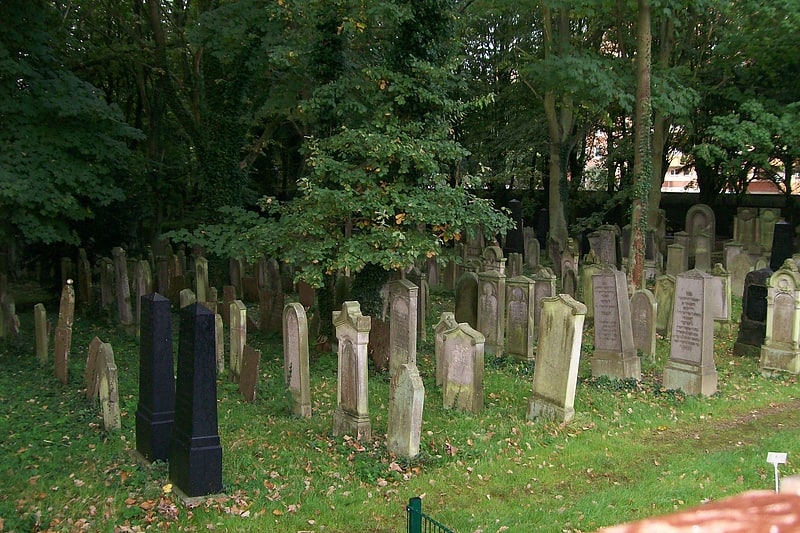
Also known as: Jüdischer Friedhof
The Jewish Cemetery in Lübeck-Moisling is considered the largest Jewish cemetery in Schleswig-Holstein.
Carlebach-Synagoge

Synagogue in Lubece-a synagogue located in the Old Town in Lubece at St.-Annen-Straße 13, between the church of St. Idzi and the former monastery of St. Anna.
The synagogue was built in 1880, in a mahile style with a magnificent dome. During the Crystal Night of November 9-10, 1938, Nazi militias completely destroyed the interior of the synagogue.
In 1939-1941 it was rebuilt. On its front wall there is a fragment of Psalm 67.4 in Hebrew: "Let you, God, will praise the peoples." Currently, the synagogue belongs to the local Jewish commune and still serves cult purposes.
Address: 13 Sankt-Annen-Straße, Lübeck
Von-Großheim-Platz
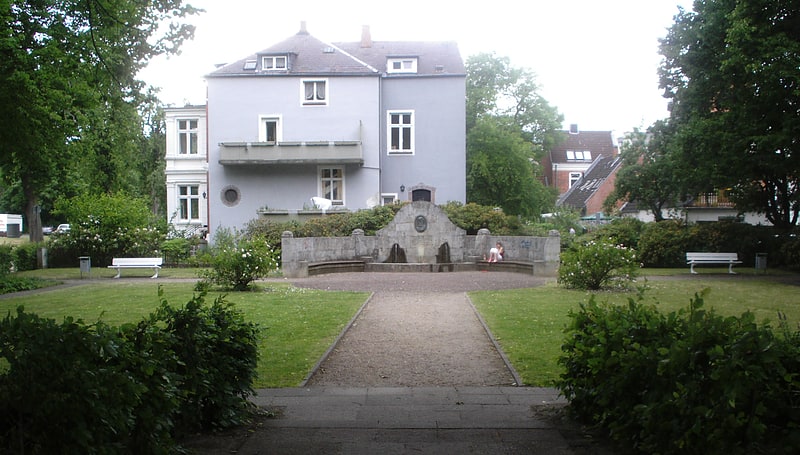
Von-Grossheim-Platz is a park in the St. Jürgen district of Lübeck.